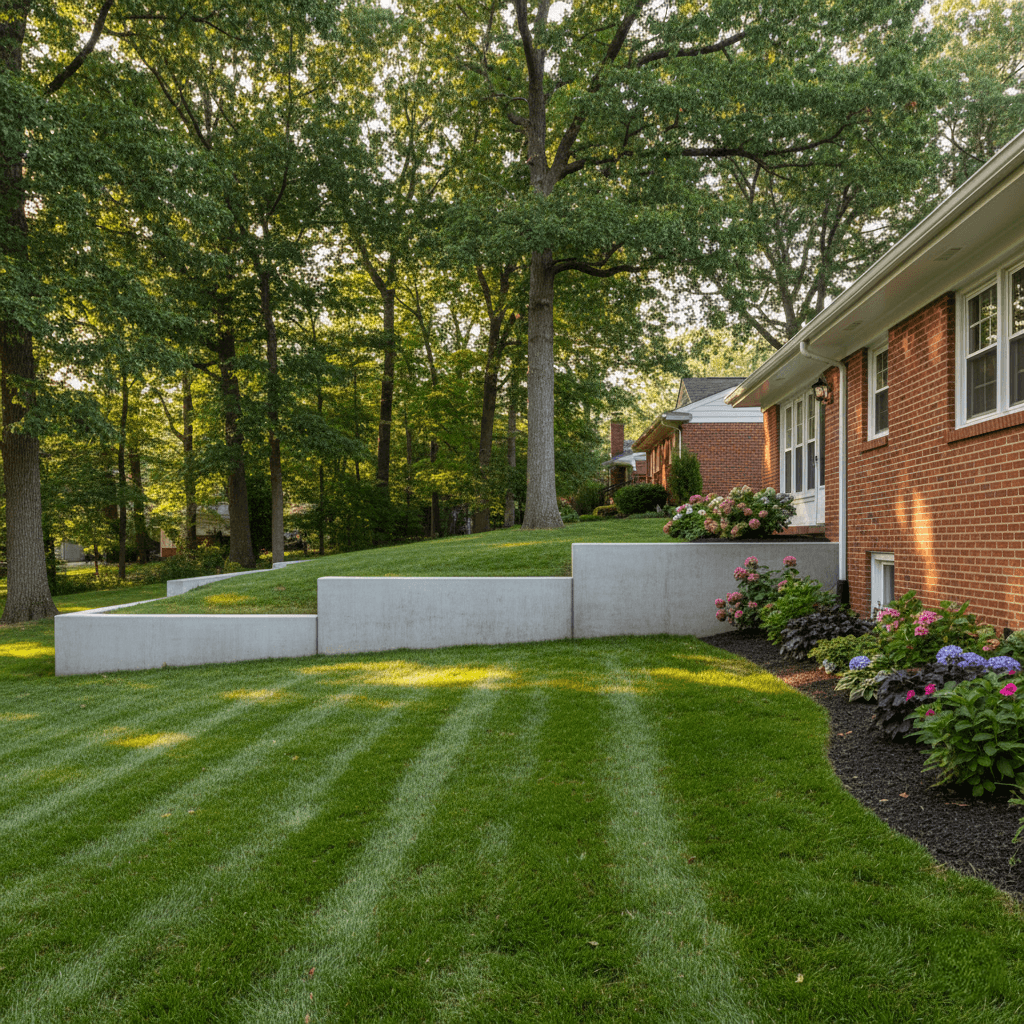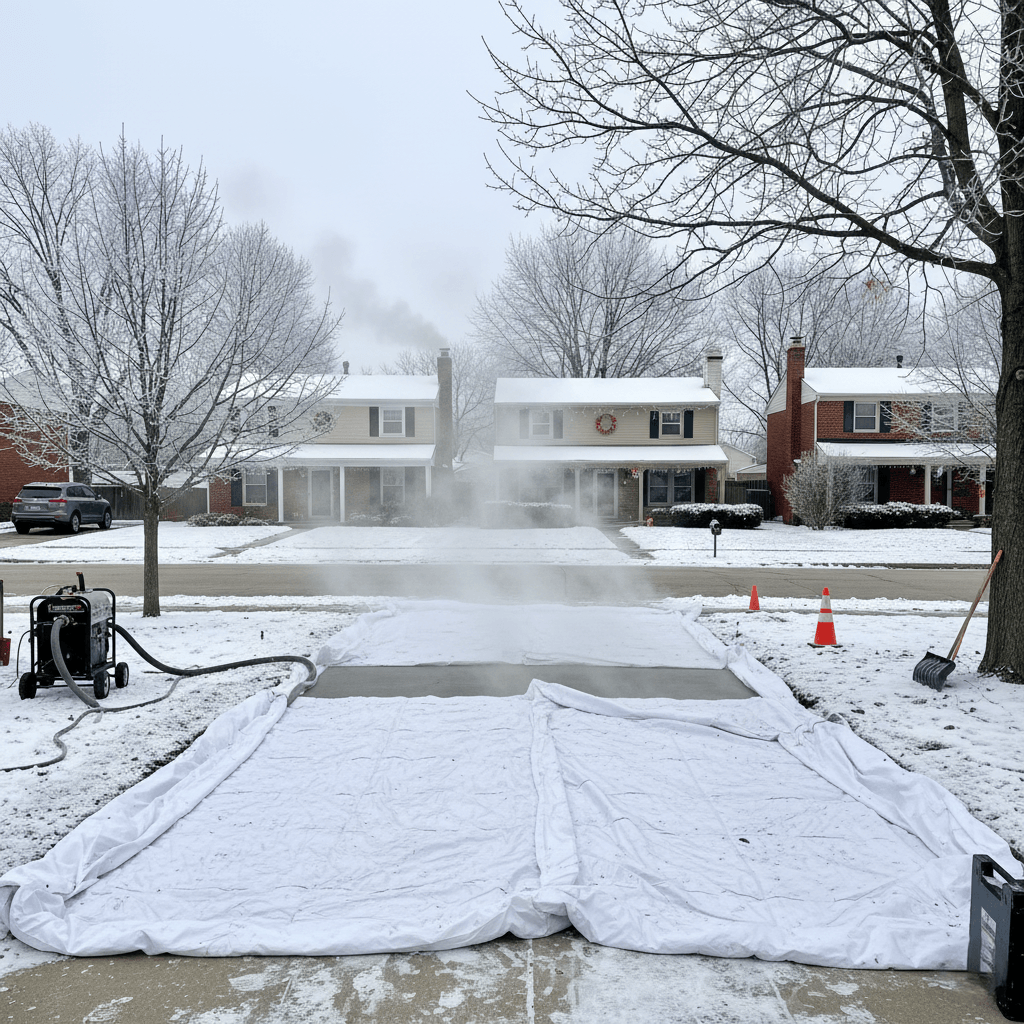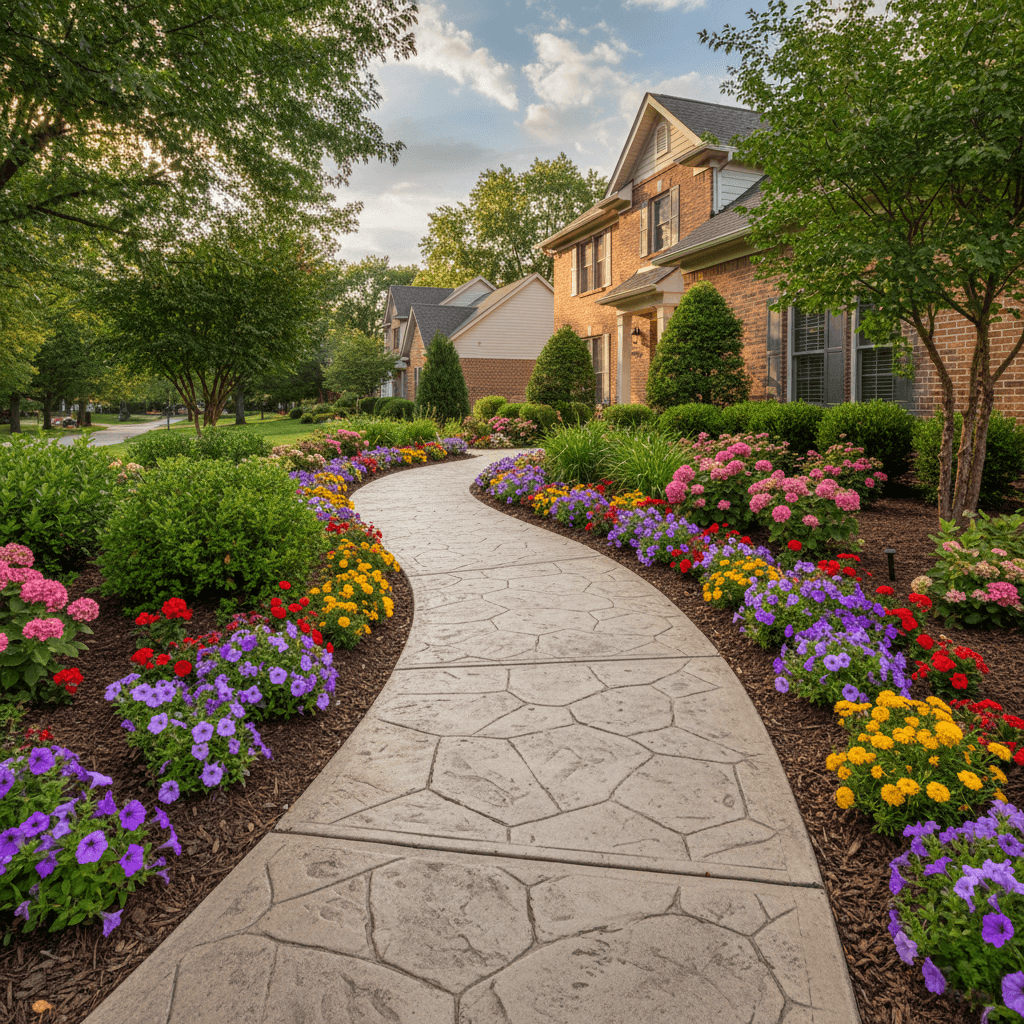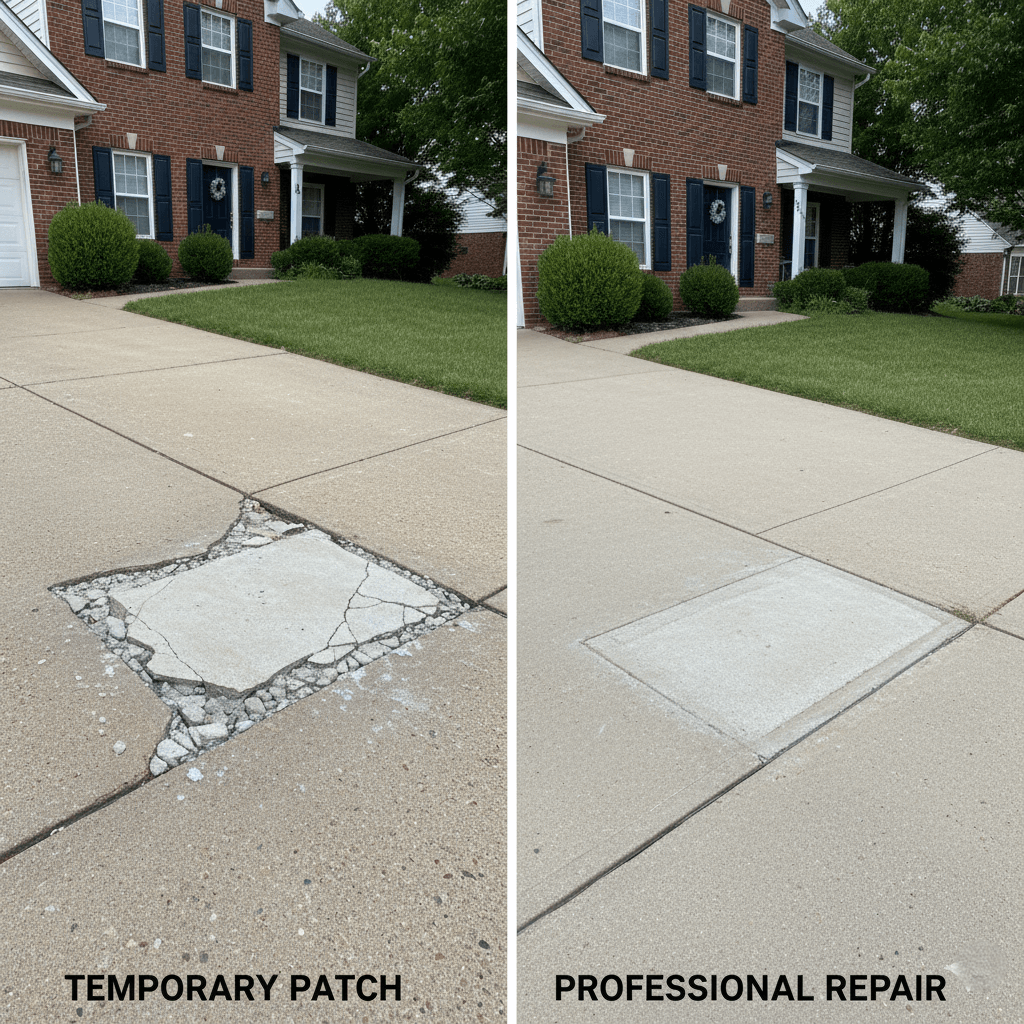
Why St. Louis Residents Choose Concrete Retaining Walls
Concrete Retaining Wall St. Louis
Erosion threatens countless properties throughout St. Louis, silently undermining foundations and washing away valuable topsoil with every rainfall. Homeowners are increasingly turning to concrete retaining wall installations as their primary defense against this persistent problem. These permanent structures provide superior strength compared to alternative materials while offering decades of reliable protection. Heavy rainfall and the region’s clay-rich soil create perfect conditions for erosion, making preventative measures essential. Property owners who invest in quality erosion control solutions today avoid far more expensive foundation repairs tomorrow.

The Growing Erosion Problem in St. Louis
St. Louis receives approximately 44 inches of annual rainfall, with heavy storms frequently overwhelming drainage systems and accelerating soil loss. The region’s topography includes numerous slopes and hillside properties, particularly in neighborhoods like Dogtown and Clayton-Tamm, where elevation changes create natural erosion pathways. Clay soils common throughout the area become heavy when saturated, placing enormous pressure on slopes and increasing the likelihood of soil movement. Flash flooding events have become more frequent in recent years, stranding motorists and causing widespread property damage across the metropolitan area.
How Erosion Damages Properties
Soil erosion doesn’t just alter landscaping aesthetics; it poses serious structural threats to homes and buildings. Water runoff carves channels through yards, carrying away soil that supports foundations and creating dangerous voids beneath structures. Basement walls face increased hydrostatic pressure as saturated soil pushes against foundations, forcing water through cracks and joints. Driveways and patios lose supporting soil underneath, leading to cracking, settling, and eventual failure. Downslope properties suffer from sediment accumulation, which clogs drainage systems and kills vegetation.
Why Concrete Retaining Walls Outperform Alternatives
Superior Strength and Durability
A properly designed concrete retaining wall can withstand tremendous lateral forces from wet, heavy soil that would overwhelm lesser materials. Reinforced concrete structures resist weathering, rot, and insect damage that compromise timber walls within just a few years. Unlike interlocking blocks that can shift or separate over time, poured concrete forms a monolithic barrier that maintains its integrity indefinitely. The material’s compressive strength makes it ideal for taller walls exceeding four feet, where structural demands increase significantly.
Long-Term Cost Effectiveness
While initial installation costs may exceed those of alternative materials, concrete retaining walls deliver exceptional value over their lifespan. These structures typically last 50 to 100 years with minimal maintenance, compared to 15 to 25 years for treated timber walls. Property owners avoid repeated replacement costs and the landscape disruption that comes with wall reconstruction. Insurance claims related to foundation damage and erosion often exceed the cost of preventative concrete wall installation by substantial margins.
Critical Design Elements
Proper Drainage Integration
The most common cause of retaining wall failure is inadequate drainage behind the structure. Water accumulation creates hydrostatic pressure that can bow or topple even well-built walls, making drainage design absolutely critical. Weep holes placed at regular intervals allow water to escape rather than building up dangerous pressure. Perforated drain pipes installed behind the wall collect and redirect groundwater away from the structure. Gravel backfill creates a permeable zone that facilitates water movement toward drainage outlets.
Foundation Requirements
Every concrete retaining wall requires a solid foundation to prevent settling and tilting over time. Footings must extend below the frost line, which reaches approximately 30 inches deep in the St. Louis region. The footing width typically equals half the wall height plus an additional foot for stability. Proper soil compaction beneath the footing ensures uniform support and prevents differential settlement. Engineers calculate these specifications based on soil conditions, wall height, and the surcharge load from slopes above.
Strategic Placement Considerations
Identifying the optimal location for a concrete retaining wall requires careful analysis of water flow patterns and soil conditions. Walls positioned at the base of slopes intercept runoff before it gains erosive momentum, protecting everything downhill. Multiple shorter walls arranged in terraced levels often perform better than a single tall wall on steep grades. Property lines, utility locations, and existing vegetation all influence placement decisions that professionals evaluate during site assessment.
Addressing Existing Damage
Many homeowners install retaining walls after erosion has already caused significant problems. Contractors must first repair slope damage by bringing in engineered fill material and properly compacting eroded areas. Geotextile fabrics may be necessary to stabilize severely compromised slopes before wall construction begins. Existing trees with exposed roots require special consideration, as root systems contribute to slope stability and help prevent future erosion. Professional assessment determines whether repairs should precede wall installation or if the wall itself can stabilize current conditions.
Permit and Regulatory Requirements
The City of St. Louis Building Division requires permits for most retaining wall projects, particularly those exceeding three feet in height. Applications submitted through the One-Stop-Shop program typically receive same-day approval for straightforward residential projects. Five sets of plans showing wall dimensions, footing details, and drainage provisions must accompany permit applications. Inspection requirements include footing verification before concrete placement and final inspection upon project completion. Walls located near property boundaries may require additional approvals to ensure compliance with setback requirements.
Professional Installation Benefits
Concrete retaining wall construction demands specialized knowledge of soil mechanics, structural engineering, and drainage design. Experienced contractors understand local soil conditions and typical water table depths throughout different St. Louis neighborhoods. Proper equipment, including concrete pumps and vibration tools, ensures thorough consolidation and maximum strength. Professional installers carry liability insurance and workers’ compensation coverage that protects property owners from potential construction accidents. Reputable companies provide warranties that guarantee structural performance and give homeowners peace of mind.
Enhancing Property Value
Well-designed concrete retaining walls create usable space on sloped properties while dramatically improving curb appeal. Terraced yards become functional outdoor living areas for gardens, patios, and recreational spaces that increase property value. Real estate professionals consistently report that erosion control measures positively influence buyer perceptions and property marketability. Homes with visible erosion problems face difficulty finding buyers and typically sell at significant discounts. Investment in quality retaining wall systems protects existing property values while potentially increasing resale prices.
Vegetation and Aesthetic Integration
Modern concrete retaining walls offer numerous finishing options that complement any landscape design style. Stamped concrete surfaces mimic natural stone textures, providing rustic charm without sacrificing structural strength. Form liners create brick or ashlar patterns directly in the concrete during pouring. Some homeowners choose stucco or stone veneer applications over concrete surfaces for enhanced visual appeal. Strategic planting beds at wall bases soften the appearance and add color, while vines and cascading plants provide organic coverage that improves overall aesthetics.
Protecting Your Investment
Erosion damage accelerates over time, making early intervention crucial for minimizing repair costs and preserving property integrity. St. Louis Concrete Works specializes in designing and installing concrete retaining wall systems that address each property’s unique challenges. Our experienced team evaluates slope conditions, analyzes drainage patterns, and develops comprehensive solutions that stop erosion and protect foundations. We handle all permit applications and coordinate inspections to ensure full compliance with city requirements. From initial assessment through final completion, we deliver durable erosion control solutions that safeguard your most valuable asset for generations to come.



